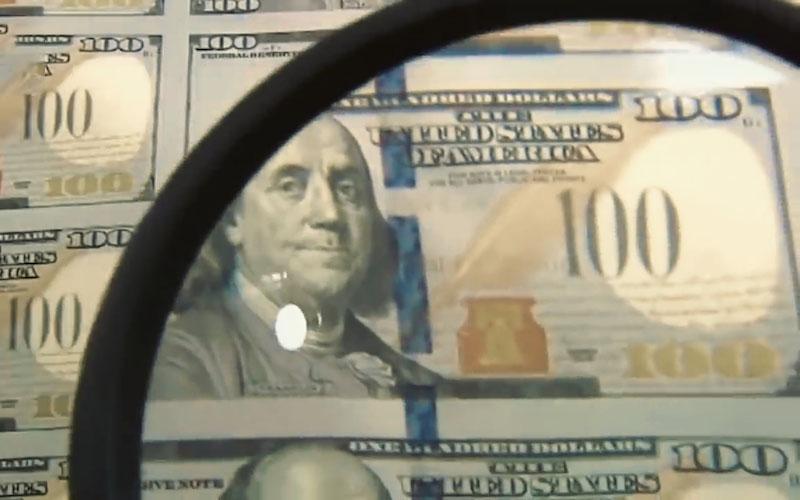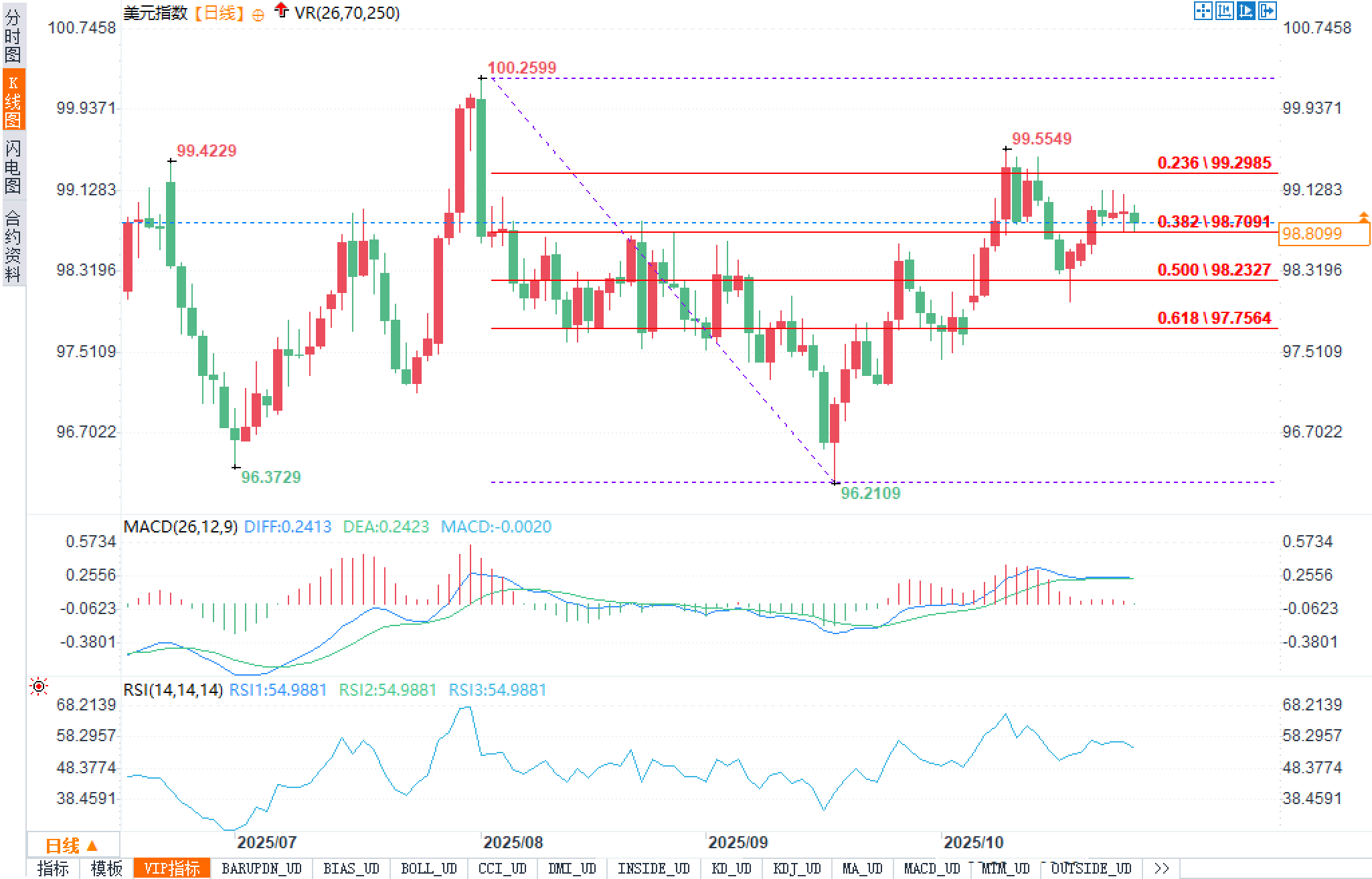The longer the shutdown, the more blind the data: Will the US dollar become a "headless fly" and fly around in circles?
2025-10-27 20:58:42

First, let's look at the macro and policy levels. The Federal Reserve will hold its interest rate meeting this week, with the prevailing market expectation leaning towards a 25 basis point rate cut early Wednesday morning (Wednesday afternoon EST). However, the communication from the Federal Reserve committee members at the press conference will influence pricing in the path of further rate cuts. Regarding inflation, the latest CPI data showed that the headline and core inflation rates in the US rose by 0.3% and 0.2% month-over-month in September, respectively, continuing to trend in a more moderate direction, leaving room for policy fine-tuning. Meanwhile, while the job market is showing signs of cooling, a sharp drop in demand has yet to occur. As a result of the convergence of interest rates and inflation, the entire nominal yield curve saw a slight rise of approximately 2 basis points compared to last week: the 2-year yield was at 3.503%, the 5-year yield at 3.628%, the 10-year yield at 4.020%, and the 30-year yield at 4.605%. In this combination of a possible small reduction in short-term policy and a modest increase in long-term nominal yields, the US dollar index's direction is often less clear than its strength. In the short term, this trend reflects more of a recalibration of prior easing expectations than a reversal of trend.
Risk sentiment is the second main factor influencing the US dollar index. Positive signals from the Trans-Pacific Partnership, discussions on a new framework with several Southeast Asian countries, and the recovery of regional assets triggered by election results in some Latin American countries have all contributed to an upward trend in global stock indices and the semiconductor sector. A rebound in risky assets typically suppresses the dollar's perceived safe-haven nature, theoretically weakening its risk-free premium. However, if a resurgence in risk also leads to upward revisions to US domestic investment demand and capital expenditure expectations, this could act as a hedge against the dollar through the attractiveness of relatively strong US assets and a marginal upward shift in expected interest rate differentials. In other words, when the risk-off switch is activated, the dollar could benefit from either growth and capital inflows or a reduction in risk aversion, depending on which channel holds greater weight.
The third clue comes from the divergence in policies among overseas central banks and major economies. The European Central Bank has recently emphasized observation and assessment. The UK's output and wage stickiness present the Bank of England with a growth-inflation dilemma, limiting their ability to support the euro and pound. In Japan, external interest rate differentials remain significant. If global yields rise modestly, the yen will remain passive, unless expectations for internal and external interest rate differentials converge more substantially. Among commodity currencies, the Reserve Bank of Australia (RBA) has recently adopted a slightly hawkish stance, arguing that inflation is declining and employment remains generally stable. It also emphasized that policy remains "slightly restrictive" and maintains restraint on rate cuts. This "slower, steadier" signal typically increases the Australian dollar's sensitivity to interest rate differentials. The Reserve Bank of New Zealand (RBNZ) has not yet become a dominant variable, but the New Zealand dollar tends to fluctuate in tandem with risk appetite. At the Swiss National Bank (SNB), if global risk appetite improves, the Swiss franc's safe-haven premium tends to retreat marginally. In summary, the divergence among external currencies reinforces the offsetting effects of the basket weightings within the US dollar index, making any significant unilateral strength or weakness of the dollar lack a clear driver.
Returning to the intersection of interest rates and policy expectations, if the Federal Reserve implements a small rate cut this week as expected, while emphasizing "data dependence" and "no pre-set path," the downward potential for short-term interest rates will be offset by "cautious forward guidance." Long-term nominal interest rates are more likely to remain in the upper range due to the combined effects of supply-demand trade-offs and cooling inflation. Within this "short-term decline, long-term stability" curve, the US dollar index typically lacks the foundation for a unilateral trend, but rather fluctuates around economic relativity and actual interest rate differentials. This is compounded by the negative impact of the US government shutdown on short-term signals: the uncertainty surrounding the release of macroeconomic aggregate data, the pace of fiscal spending, and sectoral operations will temporarily suppress the "policy clarity premium" for the US dollar. However, once the shutdown is lifted and lagged data is restored, the impact will likely manifest itself in a "suppressive" and "recoverable" pattern.
Technical aspects
On the daily chart, the US dollar index fell from 100.2599 to 96.2109 before rebounding, reaching a high of 99.5549, and then fluctuated between 98.7 and 99.3. The current price is 98.8099, above the 0.382 retracement of 98.7091 and below the 0.236 retracement of 99.2985. The candlestick body has narrowed in recent days, with a bullish upper shadow, indicating continued selling pressure from above.

The MACD is moving upward, but the DIF is slightly lower than the DEA, indicating a weakening of the candlestick chart and a slowdown in momentum. The RSI (14) is hovering around 55, showing a neutral to strong reading but not yet forming a trend amplification. If the 0.382 retracement remains effective, the range structure is likely to continue. If it fails, the next observation points are 0.500 (98.2327) and 0.618 (97.7564). To move upward, a close above 99.30 and accompanied by momentum expansion are needed before a retest of 99.55 can be evaluated. The overall trend remains oscillating and awaiting signals.
Outlook
Several catalysts warrant attention. First, whether the Fed Chair's language at the press conference emphasizes the delicate balance between resilient growth and declining inflation will determine market expectations regarding whether further rate cuts will be swiftly followed. Second, the trade-off between US 10-year and 30-year yields this week, driven by supply, inflation expectations, and global duration demand, will directly impact the US dollar's external interest rate differential and the passive volatility of the yen and euro. Third, whether the pace and scale of multinational industrial capital investment can be further confirmed; once hard data emerges, the dollar's narrative of relative strength will find a firmer anchor. Fourth, if global risk assets continue to rise, safe-haven currencies like the Swiss franc may continue to weaken, with the dollar index likely to be suppressed through the "growth and decline" of basket weights rather than a single variable shock.
- Risk Warning and Disclaimer
- The market involves risk, and trading may not be suitable for all investors. This article is for reference only and does not constitute personal investment advice, nor does it take into account certain users’ specific investment objectives, financial situation, or other needs. Any investment decisions made based on this information are at your own risk.





















